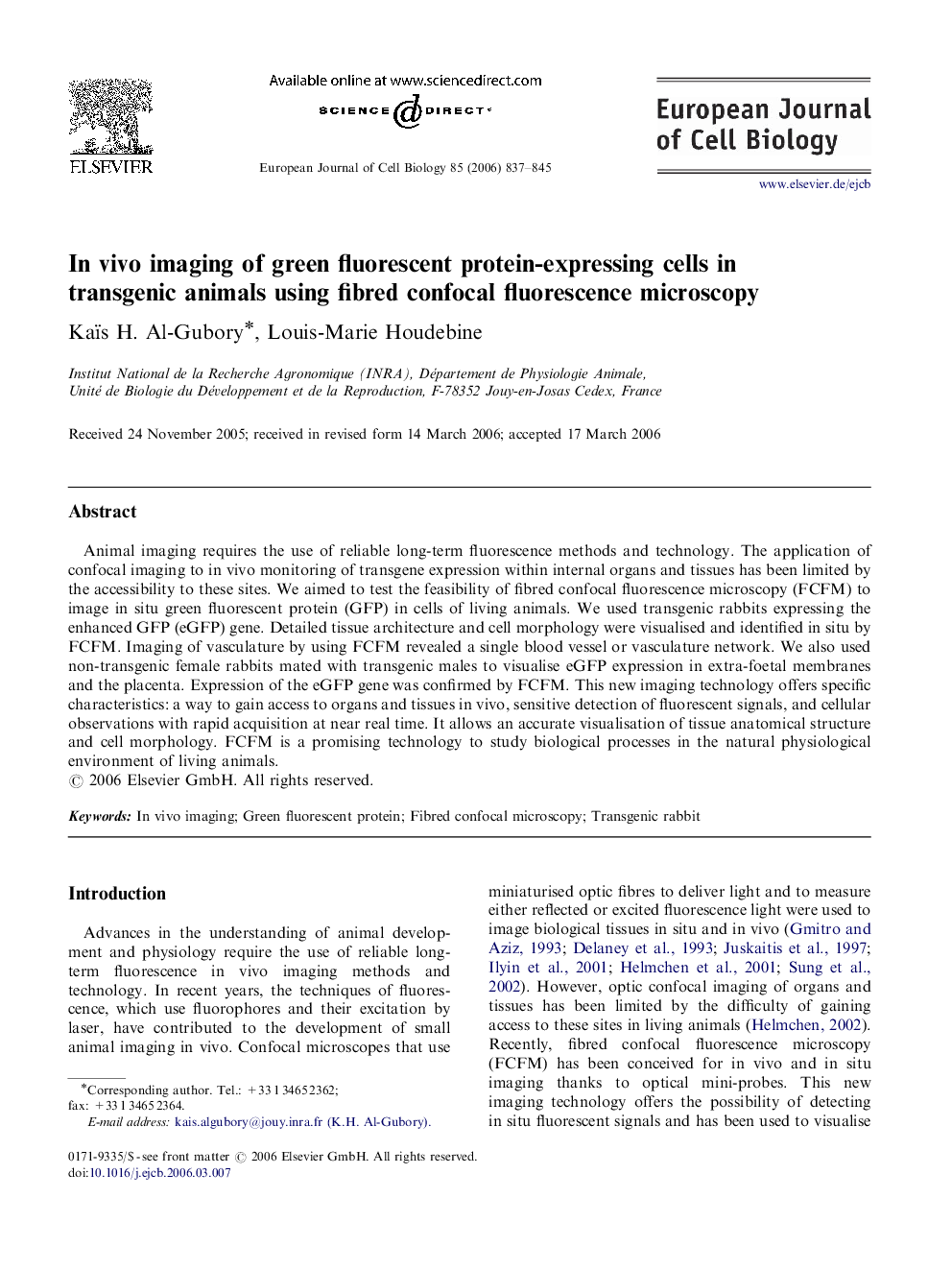| Article ID | Journal | Published Year | Pages | File Type |
|---|---|---|---|---|
| 2179281 | European Journal of Cell Biology | 2006 | 9 Pages |
Animal imaging requires the use of reliable long-term fluorescence methods and technology. The application of confocal imaging to in vivo monitoring of transgene expression within internal organs and tissues has been limited by the accessibility to these sites. We aimed to test the feasibility of fibred confocal fluorescence microscopy (FCFM) to image in situ green fluorescent protein (GFP) in cells of living animals. We used transgenic rabbits expressing the enhanced GFP (eGFP) gene. Detailed tissue architecture and cell morphology were visualised and identified in situ by FCFM. Imaging of vasculature by using FCFM revealed a single blood vessel or vasculature network. We also used non-transgenic female rabbits mated with transgenic males to visualise eGFP expression in extra-foetal membranes and the placenta. Expression of the eGFP gene was confirmed by FCFM. This new imaging technology offers specific characteristics: a way to gain access to organs and tissues in vivo, sensitive detection of fluorescent signals, and cellular observations with rapid acquisition at near real time. It allows an accurate visualisation of tissue anatomical structure and cell morphology. FCFM is a promising technology to study biological processes in the natural physiological environment of living animals.
